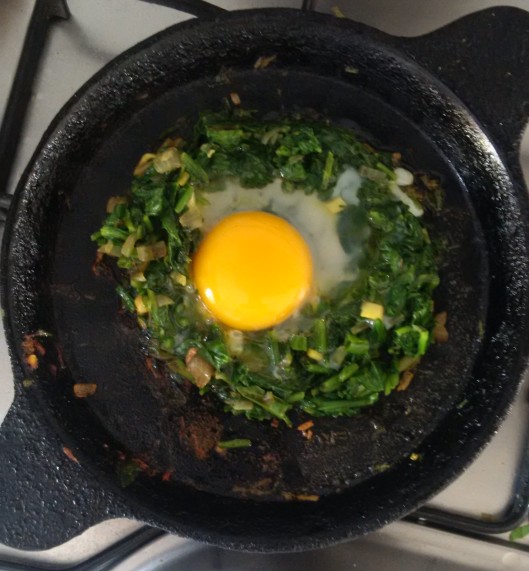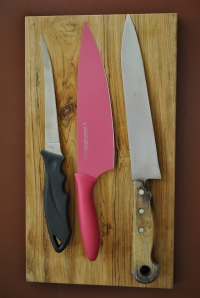Ahh Biryani, one of the most fantastic foods on the planet. Also one to generate the most heat and passion when people meet. Essentially biryani is a dish of rice and meat assembled for the final preparation. I think biryani does not need a qualifier like chicken, mutton or fish or vegetable. I think biryani is made with meat, period. OK some people like to have chicken which is a battery hen fed on antibiotics and factory made feed. I prefer the free range, grass fed mutton we get in India is the only way to make biryani.
I have seen so many kinds of biryani in India that it boggles the mind. In Chennai Dindigul and Ambur are the reputed biryani capitals. Made with the short grain jiraga rice this biryani lacks the colour of the north Indian style and usually served with a boiled egg and ofcourse spiced with pepper, cinnamon and cloves. The Mopala biryani from Kerala is also made of short grain rice, is more like a pulao in my reckoning and served with a fantastic dahi kachumber and a papad fried in coconut oil. A great example of this can be found at the Grand Hotel in Ernakulum (their Karimeen is also great).
Moving up to Maharashtra there are the all time classics like Delhi Durbar which is a very greasy biryani which people rave about. The Olympia Coffee House on Colaba Causeway was one of Busybee’s favourites and they make a great Mehasana style biryani. Small portions at a lower cost for the regular clientele which is taxi drivers. Mumbai has also been overtaken by a surge of Bengali restaurants which bring their own style of pulao like biryani made without red chilli but loads of whole spice. Then there is the classic Hyderabadi biryani (best eaten in a Hyderabadi home)
THe Avadh style biryani is more my style and some people claim that the Dum Pukht style of biryani was actually invented in the ITC Hotel chains.
Coming back to Good Food and biryani, I think the best option is to make biryani at home with ingredients which you buy and then use to make what appeals to you. I suggest that you start with small portions and through a process of trial and error you will arrive at a dish which will bear your own style and will be good to make and great to eat and to serve to your guests.
Always begin with good mutton, make sure you go to the butcher and get good mutton with bone. Make sure the rice is a good fragrant long grain rice. Avoid the various branded packs and get half kilo samples from your local kirana shop. I get some fantastic “biryani rice” from a shop at Pali market.
You will need some ginger garlic paste which you can buy ready made, some whole spices like cloves, cardamom both green and black. some good curd (yoghurt).
Some people sprinkle rose water on the final biryani, I prefer good saffron.
A good biryani should have potatoes in it. Again, some people prefer to deep fry cut potatoes and then put them in the final dum. I think fried potatoes taste great.
The chilli you use will differ from time to time so make sure you stick to one place or brand to ensure consistency.
The cooking medium can be either groundnut or mustard oil but use a good cold pressed oil and avoid the fancy refined oils. Their health quotient is yet to be proved and the food made in them just does not taste like it should. Mustard oil is available easily but it is worth hunting for good unrefined groundnut oil.
Like I said before make a small quantity of biryani and taste it and then modify the quantities till you get something you like the taste of.
Starter recipe
500 gms mutton with bone
500 gms long grain rice
2 potatoes medium size
3 medium onions
4 cloves
4 green cardamom
2 black cardamom
stick of cinnamon
teaspoon of red chilli (taste and add more if required)
teaspoon of turmeric (fresh if you can get it in December from Wai near Mahableshwar)
1 teaspoon roasted and ground dhaniya seeds
Process
Mutton
add dahi, turmeric, red chilli and let it stand for an a hour in the frig.
Slice the onions fine and sautee in about 100 ml oil in a heavy bottom dish. ( I know someone who has welded an iron tava to a regular handi)
Stir till translucent and brown. Add the ginger and garlic paste and fry for about 2-3 minutes.
Add the marinated mutton and let it cook for about 15 minutes.
Add salt to taste and cook for a further 30 minutes on a low flame.
The add the cloves and green cardamom and continue simmering for at least another 45 minutes till the mutton is well cooked and almost falls off the bone.
Taste again and make sure the salt and chilli are to your liking. Shot off the flame and add the cinnamon stick.
Cut the potatoes into 4 and wash in cold water and then deep fry for about 10 minutes till brown outside.
Do not overcook
Separately wash 500 gms long grain rice and cook with a dash of turmeric to impart a nice colour.
When the rice is swollen but al dente take it off the flame and drain the water.
Taste the mutton once more to make sure it is well spiced and then add the fried potatoes to this and then add the rice on top of this.
Never mind the layers of mutton, rice, mutton, rice.
Take a pinch of saffron and add it to 100 ml of hot milk, stir and then pour over the rice in the dish.
Seal the dish with a heavy lid and put a weight on it. I use a grinding stone.
Place a tawa on the gas and then place the biryani handi on it.
Slow simmer for about 20 minutes and then stop the gas.
Let it sit for about 15 minutes and then open the id and serve with an onion and tomato kachumber.
Play with the ingredients, you may like to add a dash of rosewater to the biryani instead of saffron.
You may like to boil the rice with some cinnamon and cardamom
In about 4 trials you should end up with your own signature style biryani.
Enjoy!


